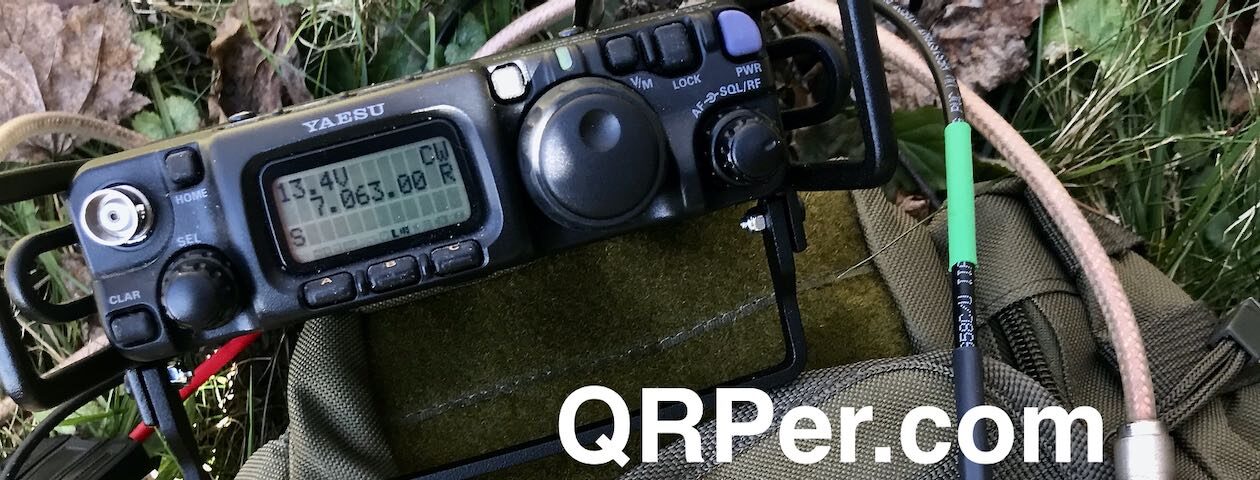On Wednesday, May 14, 2025, my good friend Eric (WD8RIF) and I started our drive from Athens to Dayton, Ohio. We left Eric’s QTH early that morning—not because it’s a long drive (it’s only about 2.5 hours)—but because we wanted to activate at least two new-to-me parks en route and still arrive early enough to stop by the Commissary at Wright-Patterson Air Force Base, check into our hotel, and meet up with friends for dinner.
The day before, I wasn’t able to activate a park in West Virginia as planned due to thunderstorms in the area. I also heard that propagation was incredibly poor—something we’ve seen off and on lately—so if you’re planning to validate an activation, be sure to budget extra time to reach your ten contacts.
That Wednesday morning started off foggy and misty, but the clouds quickly burned away and gave way to a beautiful day.

Since I was firmly in WD8RIF’s activation territory, I let him do all of the planning for us that day. (Let’s be honest—I tend to let Eric do all of the planning no matter where we’re roving! Don’t tell him that, though.)
Lake Alma State Park (US-1967)
Our first stop was Lake Alma State Park near Hamden, Ohio.

Lake Alma is a beautiful park with large parking areas, great lake access, and numerous ideal spots for a POTA activator to set up.
Eric suggested we check out the gazebo, but I was keen to use one of the picnic shelters because it sat right beside an old-growth hardwood tree—just the kind I like to use to support my antennas!
 Often when Eric and I do joint POTA activations, we activate at the same time to save time. In this case, we decided to take turns—me first at the key.
Often when Eric and I do joint POTA activations, we activate at the same time to save time. In this case, we decided to take turns—me first at the key.
 I knew Eric had never used a Penntek TR-45L, so I brought along my “skinny” version of this magnificent little rig. Paired with a 40-meter EFHW deployed next to the shelter, I figured we’d have nearly ideal conditions—even if propagation wasn’t.
I knew Eric had never used a Penntek TR-45L, so I brought along my “skinny” version of this magnificent little rig. Paired with a 40-meter EFHW deployed next to the shelter, I figured we’d have nearly ideal conditions—even if propagation wasn’t.

Setup was quick and easy!

Somehow, I managed to go first, so I prepped my log and aimed to get ten contacts to validate this new park.
Gear
 Note: All Amazon, CW Morse, ABR, Chelegance, eBay, and Radioddity links are affiliate links that support QRPer.com at no cost to you.
Note: All Amazon, CW Morse, ABR, Chelegance, eBay, and Radioddity links are affiliate links that support QRPer.com at no cost to you.
Radio
- Penntek TR-45L “Skinny”
Antenna System and Throw Line
- MW0SAW’s Homebrew 40M EFHW built on a SOTAbeams Winder
- ABR Industries 25’ RG-316 cable assembly with three in-line ferrites (Use Coupon Code ABR10QRPER for 10% Discount!)
- Weaver arborist throw line/weight and storage bag
Key/Cable
- CW Morse “Pocket Paddle”
- Key cable: Cable Matters 2-Pack Gold-Plated Retractable Aux Cable – 2.5 Feet
Pack/Cover
Battery
Logging
Camera and Audio
- DJI OSMO 4 action camera with Joby Telepod Sport Tripod
- DJI Wireless Microphones
On The Air
 I started calling CQ POTA on 20 meters. Fortunately, the band had some life in it! Continue reading QRP POTA: A Pre-Dayton Activation at Lake Alma State Park with WD8RIF!
I started calling CQ POTA on 20 meters. Fortunately, the band had some life in it! Continue reading QRP POTA: A Pre-Dayton Activation at Lake Alma State Park with WD8RIF!



















































































